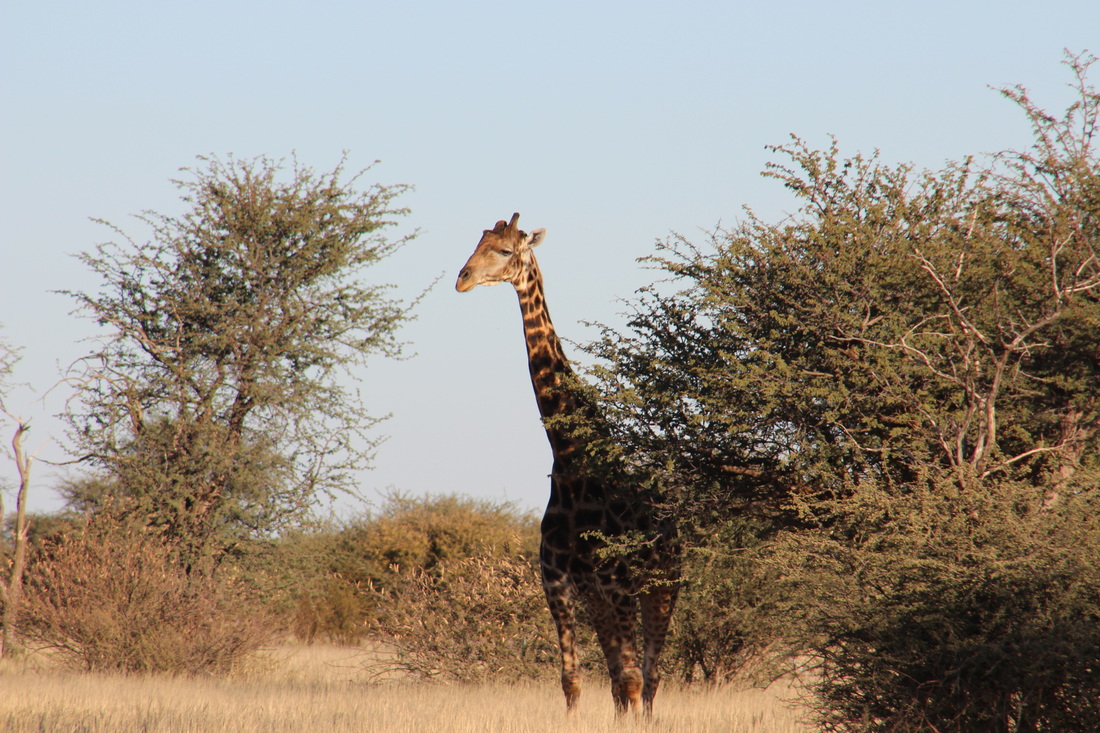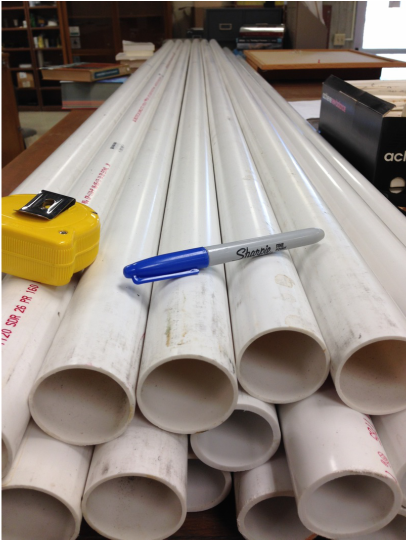After a full day of behavioral observations, we couldn’t perceive an animal on the road in front of us. Despite the animal being past our typical turn off of the dirt road to get back to our camp, we decided to check out the animal and take the long way back to our tents. The animal itself was unspectacular - unspectacular only because of how common it is – it was a Springbok that had stood strangely on the side of the road. However, this long way around also provided us a glimpse of a bat-eared fox, a purple roller, and to our surprise a pair of giraffes. Had we taken the quick road home we would have missed all of this.
As with this drive, we have also had to divert to taking the long road with the field research on sociable weaver behavior. While we intended to observe cooperative nest construction of sociable weavers in a field aviary, we soon slowly discovered that the sociable weavers we put in the aviary were content with eating the termites and seed we had provided them, and performed none of the behavior we were interested in measuring. Therefore we have switched to a typical observational study where we have placed color bands on free-living sociable weavers, and are in the process of cataloguing the same behaviors as we intended to in the aviary experiment. In the days of observation so far, we have observed the behaviors we are interested in and have witnessed some remarkable instances of non-target behavior. For instance, two days ago we saw a Gabar Goshawk attempt to catch a sociable weaver on the wing as a large foraging flock was coming back to the nest.
As with the drive home, we’ve had to divert course on our animal behavior research out here. We’re hoping that our new research course proves as fruitful as our detour did a few African evenings ago.
As with this drive, we have also had to divert to taking the long road with the field research on sociable weaver behavior. While we intended to observe cooperative nest construction of sociable weavers in a field aviary, we soon slowly discovered that the sociable weavers we put in the aviary were content with eating the termites and seed we had provided them, and performed none of the behavior we were interested in measuring. Therefore we have switched to a typical observational study where we have placed color bands on free-living sociable weavers, and are in the process of cataloguing the same behaviors as we intended to in the aviary experiment. In the days of observation so far, we have observed the behaviors we are interested in and have witnessed some remarkable instances of non-target behavior. For instance, two days ago we saw a Gabar Goshawk attempt to catch a sociable weaver on the wing as a large foraging flock was coming back to the nest.
As with the drive home, we’ve had to divert course on our animal behavior research out here. We’re hoping that our new research course proves as fruitful as our detour did a few African evenings ago.


 RSS Feed
RSS Feed
